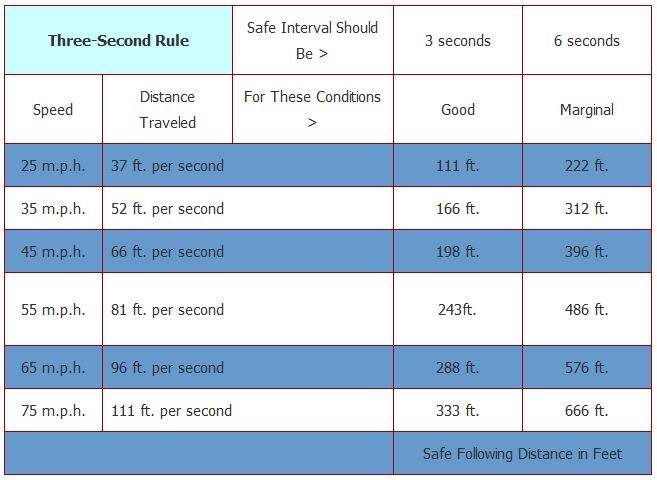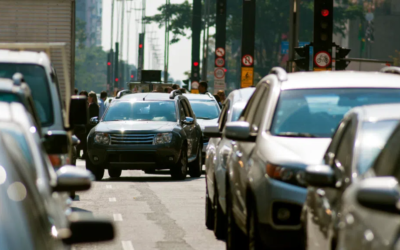When driving, space is a very important variable when it comes to the safety of you and other road users. Maintaining a safe distance from smaller vehicles and other trucks allows you to manage the risks and help keep everyone on the road safe. Driving is all about cooperation so here are some tips when it comes to keeping maintaining a safe distance and the laws that accompany these practices:
According to the Highway Traffic Act in Ontario following too closely is seen as “The driver of a motor vehicle or street car shall not follow another vehicle or street car more closely than is reasonable and prudent having due reWhen driving, space is a very important variable when it comes to the safety of you and other road users. Maintaining a safe distance from smaller vehicles and other trucks allows you to manage the risks and help keep everyone on the road safe. Driving is all about cooperation so here are some tips when it comes to keeping maintaining a safe distance and the laws that accompany these practices:
When driving, space is a very important variable when it comes to the safety of you and other road users. Maintaining a safe distance from smaller vehicles and other trucks allows you to manage the risks and help keep everyone on the road safe. Driving is all about cooperation so here are some tips when it comes to keeping maintaining a safe distance and the laws that accompany these practices:
According to the Highway Traffic Act in Ontario following too closely is seen as “The driver of a motor vehicle or street car shall not follow another vehicle or street car more closely than is reasonable and prudent having due regard for the speed of the vehicle and the traffic on and the conditions of the highway.” Therefore infractions can range from tickets to being seen as the cause of a collision and result in a criminal charge.
Maintaining speed is dependent on several variables including speed, volume of traffic and the conditions. It’s important to always be driving to the conditions therefore in adverse weather, maintaining more space from the vehicle in front of you is imperative. In the city where speeds are lower and traffic may be heavier maintaining a safe distance is tougher but you want to make sure that you always have an escape route in case of a risk or sudden hazard.
Being able to safely brake at any time is an important factor when gauging safe distance with the vehicle in front of you. Trucks need more time to stop so maintaining a good distance in front of you is even more imperative. Keeping a distance of one car length for every 10 km/h of speed (therefore six car lengths between you and the vehicle in front at 60 km/h) is recommended.
Following too closely is not only a dangerous and aggressive habit but it is also against the law. Tickets for tailgating can carry penalties of fines, demerit points, suspension of license, and a conviction on your driving record and can also affect insurance premiums. Many rear end collisions result in a charge of following too closely!
In addition to providing enough stopping time, proper following distance allows for more time to make good, well-planned decisions and affords other drivers the opportunity to scan the sides, look far enough ahead, and view the vehicle immediately in front. Doubling your following distance in adverse conditions will allow for a more cooperative and safe driving experience for everyone. Remember that even if another driver rear-ends your vehicle and pushes you into the one ahead, you will STILL be held a portion at fault as you did not leave a safe distance between vehicles.
Be sure to give lots of space for the safety of you, others and your resulting insurance record!
According to the Highway Traffic Act in Ontario following too closely is seen as “The driver of a motor vehicle or street car shall not follow another vehicle or street car more closely than is reasonable and prudent having due regard for the speed of the vehicle and the traffic on and the conditions of the highway.” Therefore infractions can range from tickets to being seen as the cause of a collision and result in a criminal charge.
Maintaining speed is dependent on several variables including speed, volume of traffic and the conditions. It’s important to always be driving to the conditions therefore in adverse weather, maintaining more space from the vehicle in front of you is imperative. In the city where speeds are lower and traffic may be heavier maintaining a safe distance is tougher but you want to make sure that you always have an escape route in case of a risk or sudden hazard.
Being able to safely brake at any time is an important factor when gauging safe distance with the vehicle in front of you. Trucks need more time to stop so maintaining a good distance in front of you is even more imperative. Keeping a distance of one car length for every 10 km/h of speed (therefore six car lengths between you and the vehicle in front at 60 km/h) is recommended.
Following too closely is not only a dangerous and aggressive habit but it is also against the law. Tickets for tailgating can carry penalties of fines, demerit points, suspension of license, and a conviction on your driving record and can also affect insurance premiums. Many rear end collisions result in a charge of following too closely!
In addition to providing enough stopping time, proper following distance allows for more time to make good, well-planned decisions and affords other drivers the opportunity to scan the sides, look far enough ahead, and view the vehicle immediately in front. Doubling your following distance in adverse conditions will allow for a more cooperative and safe driving experience for everyone. Remember that even if another driver rear-ends your vehicle and pushes you into the one ahead, you will STILL be held a portion at fault as you did not leave a safe distance between vehicles.
Be sure to give lots of space for the safety of you, others and your resulting insurance record!gard for the speed of the vehicle and the traffic on and the conditions of the highway.” Therefore infractions can range from tickets to being seen as the cause of a collision and result in a criminal charge.
Maintaining speed is dependent on several variables including speed, volume of traffic and the conditions. It’s important to always be driving to the conditions therefore in adverse weather, maintaining more space from the vehicle in front of you is imperative. In the city where speeds are lower and traffic may be heavier maintaining a safe distance is tougher but you want to make sure that you always have an escape route in case of a risk or sudden hazard.
Being able to safely brake at any time is an important factor when gauging safe distance with the vehicle in front of you. Trucks need more time to stop so maintaining a good distance in front of you is even more imperative. Keeping a distance of one car length for every 10 km/h of speed (therefore six car lengths between you and the vehicle in front at 60 km/h) is recommended.
Following too closely is not only a dangerous and aggressive habit but it is also against the law. Tickets for tailgating can carry penalties of fines, demerit points, suspension of license, and a conviction on your driving record and can also affect insurance premiums. Many rear end collisions result in a charge of following too closely!
In addition to providing enough stopping time, proper following distance allows for more time to make good, well-planned decisions and affords other drivers the opportunity to scan the sides, look far enough ahead, and view the vehicle immediately in front. Doubling your following distance in adverse conditions will allow for a more cooperative and safe driving experience for everyone. Remember that even if another driver rear-ends your vehicle and pushes you into the one ahead, you will STILL be held a portion at fault as you did not leave a safe distance between vehicles.
Be sure to give lots of space for the safety of you, others and your resulting insurance record!





